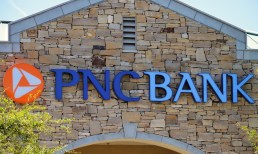As 2020 unfolds, the retail business has been dramatically altered. Macy’s started the year by laying off employees and closing stores. Simon Properties led a team of investors to essentially buy out one of its tenants, Forever 21. And the supermarket business has thinned its ranks, with several organic food players going out and Amazon coming in.
But with consumer spending holding steady, it’s important for retailers to grasp the opportunity to create innovative ways to get, keep and grow customers. One of the most commonly talked-about and executed strategies in the 2020 connected commerce world is experiential marketing. For retailers, it can be as simple as an in-store event or a high-profile design that consumers will travel to visit. But experiential marketing is also a customer-centric strategy intended to drive customer retention and strengthen the bond between retailer and consumer.
According to a recent report from Forrester and Adobe, brands defined as “experience-driven” grow at a clip of 19 percent per year, compared to 13 percent for others. And retailers that deploy experiential tactics drive repeat purchases at rates nearly twice those who don’t. Says the report: “Combined with the increased ease of online shopping and rapid growth of alternative, in-home and mobile entertainment options, it is absolutely critical that retailers and retail center owners continuously evaluate how to stand out and drive consumers to their centers. Today’s consumers desire more than simply goods, as experiences, and the memories and bragging rights that come with them – as well as content for their Instagram feed – are just as important.”
So, what constitutes experiential marketing for retailers? Wine and cheese for the shoppers? Golf games at the mall? Pop-up stores? All of the above, actually, but it’s not as easy as it sounds. The version that works the best shows the two-way, strategic nature of the discipline. Says a recent report from George Johnson, an agency specializing in experiential marketing, its purpose is to “give audiences easy and inviting access to the level of content that interests them, information is tiered and presented in hybrid formats. Dimensional, human-scaled assets attract attention, grabbing eyes and inviting exploration through physical interaction. The physical actions activate digital experiences, which draw participants deeper into individualized levels of content satisfying to them.”
This definition takes experiential marketing beyond the wine-and-cheese concept. A good example of the “human-scaled” experience can be seen at Yankee Candle. It banked its past retail strategy on the product itself, which appealed to the aroma of the candles and the homey quality of its stores. Now, in the era of experiential marketing, a consumer can go to Yankee Candle, pick a scent (say, Balsam Fir) and then use an app right in the store to send a photo to a store associate. Minutes later, that photo is applied as a label. The consumer now has a candle with a personal brand. Yankee Candle gets data, engagement and a satisfied customer. The consumer doesn’t just buy a candle – she has an experience that extends well beyond the purchase. And so does the recipient.
Like anything else worth doing in retail technology and the customer experience, experiential marketing must be measurable. For example, high-end home goods and hardware chain Anthropologie is known for its innovation and creativity in experiential marketing, including an installation at its new store in Barcelona that recruited local artists to design their windows and in-store sculptures. It ran a fashion show at 25 stores in March 2019.
Advertisement: Scroll to Continue
According to Jessica McGuinn, experiential marketing manager for Anthropologie, the fashion show was all about data. For every store and event, emails were sent to customers inviting them to the show. Those open rates were monitored and the positive RSVPs were encouraged to make a purchase during the event. The activity at the event itself was also measured. The results from all Anthropologie events in 2019 attracted more than 6,300 attendee check-ins at 665 events. During the period between September and November 2019, Anthropologie added more than 3,000 customers to its database. Attendees also had an opportunity to join the company’s loyalty program.
Macy’s is doubling down on experiential stores as part of its comeback plan for the year. It recently opened the first Market by Macy’s, a new retail concept in Southlake, Indiana. Rather than the 100,000-square-foot-plus space that Macy’s has typically used to anchor malls, the Southlake store is 20,000 square feet and located in the Southlake Town Square, a smaller shopping center. It has a more limited selection than the bigger stores, but is more personal and agile for the consumer looking for an experience while shopping.
“The purpose of the format is three things: discovery, community and convenience,” said Rachel Shechtman, Macy’s chief brand experience officer. “About a year ago, we started talking about creating a brick-and-mortar model that would stay relevant 10 years from now. Physical spaces need to provide a value that you can’t get from your couch.”
Other immersive experiences show the need to give consumers something to do and see to get them to come back again. The Woolrich flagship store in New York City is a tribute to the history of the brand, and has been called more of a museum than a store. Other companies focus on activities that stay on brand. The Lululemon store in Chicago offers food, events, meditation sessions and fitness classes. And the Hipanda apparel brand flagship in Tokyo has created a “technology nirvana” for its customers.
As described in Frame magazine: “For starters, the search starts the minute customers point to the façade with their phones, as the furious bear jumps out at them, bursting through a splash of mercury-like confetti. Then, by way of both digital and analog interactions – the former mostly AR, the latter mostly light-based – the host’s presence is revealed among the T-shirts and hoodies on the racks and hangers, which move to the beat of his supposed steps. In another room, a sea of bouncing balls jump through the handheld device, until the sullen host materializes inside a foggy chamber. Think of it as trying to catch an adorably scary Pokemon inside a mysteriously lit, minimalist haunted mansion.”
But retailers don’t have to go that far. They can just give consumers a reason to experience the brand while they shop, and give them something to do that will resonate. According to Joe Pine, who literally wrote the book on The Experience Economy: “While prior economic offerings – commodities, goods and services – are external to the buyer, experiences are inherently personal, existing only in the mind of an individual who has been engaged on an emotional, physical, intellectual or even spiritual level. Thus, no two people can have the same experience, because each experience derives from the interaction between the staged event (like a theatrical play) and the individual’s state of mind.”



